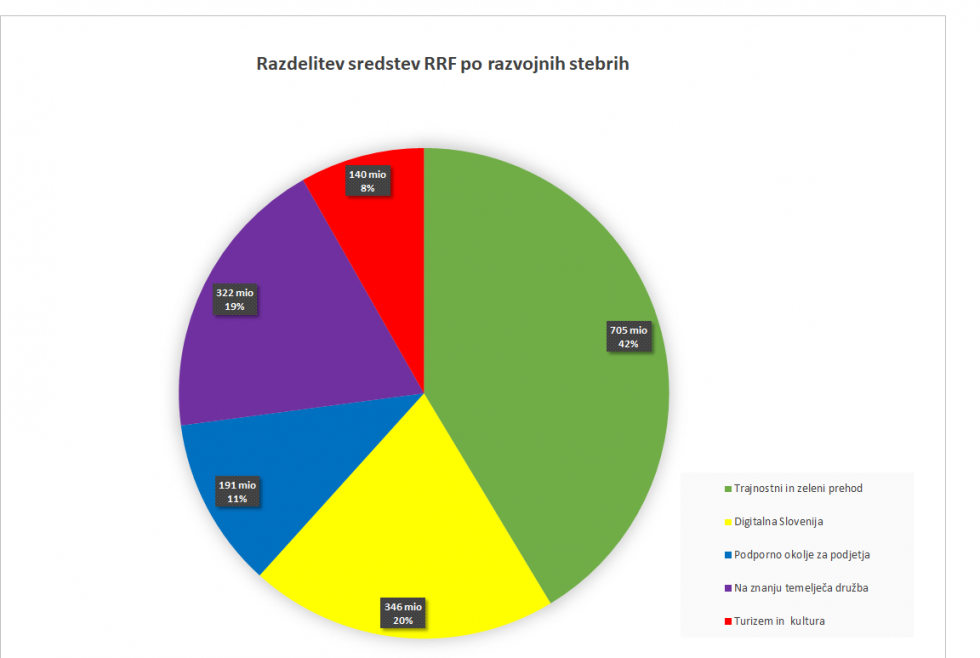Government approves draft National Recovery and Resilience Plan
- Government Office for Development and European Cohesion Policy
On 21 July 2020 EU leaders reached an agreement on the Multiannual Financial Framework 2021-2027 and the recovery instrument NextGenerationEU. Slovenia negotiated well and was awarded EUR 10.2 billion by 2029 which bring extensive additional funding that will help Slovenia recover from the crisis of the COVID-19 pandemic and boost investment in green and digital transition.
Over the next 6 years Slovenia will utilise around EUR 5.7 billion of the funding available under the recovery instrument. In addition to EUR 5.2 billion available under the Recovery and Resilience Facility (RRF), Slovenia is also eligible to EUR 312 million available under the React-EU initiative, EUR 129 million under the Just Transition Fund and EUR 68 million for Rural Development.
On 27 August 2020 Government of the Republic of Slovenia approved the bases for developing the national recovery and resilience plan which outlined the main areas to receive RRF funding. Today draft National Recovery and Resilience Plan was approved.
Reforms and structural changes
Draft National Recovery and Resilience Plan is based on the reforms and structural changes in five areas that will be subject to investment supporting reforms and structural changes. EUR 334 million of the grants will support reforms while EUR 1.705 billion of grants and EUR 2.933 billion of loans will be used for projects.
Available funding shall be allocated to the following five areas:
- sustainable and green transition represents the largest share, namely EUR 705 million of grants and 1.600 billion of loans,
- EUR 191 million of grants and EUR 828 million of loans will be allocated to the area supportive environment for enterprises,
- EUR 347 million of grants and EUR 205 million of loans will be used for digitalisation (Digital Slovenia),
- EUR 322 million of grants and EUR 105 million of loans will be allocated to education (knowledge-based society),
- EUR 140 million of grants and EUR 200 million of loans will be allocated to tourism and culture.
Slovenia’s Recovery and Resilience Plan will provide extensive financial support to reforms, structural changes and investments with the aim of mitigating the economic and social impact of the COVID-19 pandemic and making the economy, the public sector and society as a whole more sustainable, resilient and better prepared to meet the challenges pertaining to green and digital transitions.
In drafting the plan, the Government took into consideration the European Commission recommendations to Slovenia regarding the National Reform Programme, Development Report 2020 (Institute of Macroeconomic Analysis and Development), Economic Survey of Slovenia 2020 (Organisation for Economic Co-operation and Development) and numerous other national strategic documents. The plan is also in line with the guidance for drafting national recovery and resilience plans which the European Commission prepared for Member State. The guidance outlines that the Member State provides at least 37% of the measures to meet the climate objective and 20% of the measures to meet the digitalisation objective.
Informal coordination with the European Commission is well underway. Over the next few months the draft plan will be subject to coordination and will be submitted to European Commission for formal approval by 20 December 2020.


